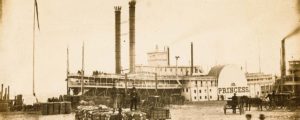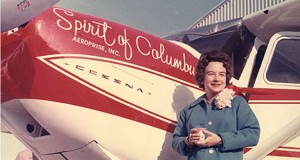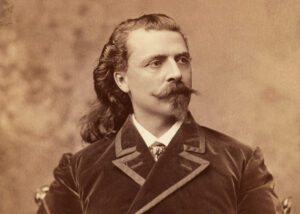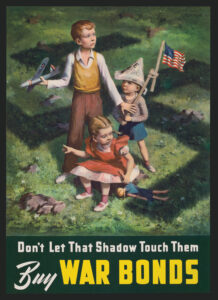Baseball’s League of Nations: A Tribute to Native American Baseball Players
Iroquois Indian Museum, Howes Cave, N.Y. Through December 31
Last August, when a 6-foot-2, 230-pound 21-year-old Winnebago Indian named Joba Chamberlain first stepped onto the pitcher’s mound for the New York Yankees in a road game against the Toronto Blue Jays, he dazzled millions of TV viewers. Uncorking his searing 100 mph fastball and wicked 87 mph slider, Chamberlain struck out the first batter, then chalked up two scoreless innings. A couple of days later against the Cleveland Indians, he hurled two more scoreless innings. Three days later he made his Yankee Stadium debut, putting down the Baltimore Orioles 1-2-3 and striking two of them out in the process. The House That Ruth Built exploded with chanting: “Jo-BA! Jo-BA! Jo-BA!”
Up at the Iroquois Indian Museum Stephanie Shultis, curator and hardcore Yankee fan, felt the scoreboard in her own head light up. “What about all the great Native American ballplayers no one remembers?” she wondered. “With Joba making such a big splash, maybe now’s the time to look at that history.” Over the next couple of days at the museum, Shultis batted her idea around with staffer Mike Tarbell, himself a third-generation ballplayer from an Akwesasne family. Their mutual enthusiasm fired her idea into a thought-provoking look at the relationship between America’s indigenous peoples and its national pastime, which includes memorabilia loaned from the Baseball Hall of Fame in Cooperstown, 35 miles up the road.
The exhibit tells a very American story. Lacrosse was the native game; baseball took over in the late 1800s, thanks largely to Indian boarding schools. This was part of the era’s “progressive” social planning: Snatch the kids away from the reservation’s pernicious influences and, as Huck Finn put it, “sivilize” them. Some 500 schools absorbed 100,000 children until the program petered out in the 1930s. The acculturation naturally included America’s national pastime. Baseball clubs sprang up on reservations, including all-women lineups. Reservation teams competed with whites from close-by towns, and some barnstorming Indian outfits played wide circuits for 20 years, making small human perforations in the monolithic Hollywood Indian image.
Racism? Sure. In 1897 “Chief ” Louis Sockalexis, a Penobscot from Maine, became one of the first American Indians to play in the major leagues. He was also the first “chief,” as nearly every Indian ballplayer who was known to be one came to be called. In 1903 “Chief ” Charlie Bender, an Ojibwa, was the first Indian in the American League, playing with Connie Mack’s Philadelphia Athletics until 1914, when he went to work in a shipyard during World War I. A gentle man, he yelled at his constant hecklers, “Foreigners! Why don’t you go back to your country?” Bender’s 212-127 lifetime pitching record, three seasons as a 20-game winner, 2.24 ERA in five World Series and 1910 no-hitter are among the reasons he is one of two American Indians in the Baseball Hall of Fame.
Like them, Jim Thorpe, the half-white descendant of Black Hawk, struggled against racism for his entire multifaceted career, until his life, like Sockalexis’, ended in alcoholism. Thorpe, thanks to his 1904 Olympic gold medals, is usually thought of as a track-and-field guy, but he played basketball, football and baseball with equal finesse. That was partly due to famed coach “Pop” Warner, who trained Thorpe, Bender and many more at the Carlisle Indian Industrial School, the foremost “progressive” institution. Thorpe’s nine years in the majors overlapped his stint in the NFL—a rare achievement.
After Ty Cobb, the famously redneck slugger, tossed a taunt at “Chief ” Moses Yellowhorse, the Pirates’ Pawnee pitcher beaned the Georgia Peach right between the eyes. Imagine if it had been Joba’s 100 mile-an-hour blazer, or one from postwar Yankee fireballer Allie “Superchief ” Reynolds, a one-quarter Creek whose 20-win seasons, lifetime 182-107 record, 36 shutouts, two no-hitters and 1,400-plus strikeouts led his team to an unprecedented five consecutive American League championships—and his 7-2 World Series record didn’t hurt.
The colorful Pepper Martin, “Wild Horse of the Osage,” was the feisty third baseman and intrepid base thief for the St. Louis Cardinals’ notorious 1930s Gas House Gang; he helped spark World Series victories with his .418 average and seven stolen bases. Though he spent part of his long career with the Cleveland Indians, Early Wynn didn’t broadcast his heritage, but his express-train fastball, fistful of weird breaking pitches and menacing attitude (he liked to say he’d deck his own mother—and batters believed him) won 300 games. The list of American Indian major leaguers numbers nearly 50, not counting players like Bucky Dent, Willie Stargell and Johnny Bench, who can claim some native heritage.
“There is no Jim Thorpe or Charles Bender Day,” one placard in the exhibit notes wistfully. Not far off in a corner, a TV loops postwar period-piece commentary. One segment features famed sportscaster Mel Allen torturing Hollywood Indian metaphors (“waving warclubs,” “pull up their tepees” and the like) while doing the “color” for an Indian-Braves game—a reminder of the climate of those days. That kind of chatter is unlikely around Chamberlain, unless the clowning Yankee instigates it himself. During warm-ups, he’s fond of asking for tunes like “Indian Outlaw” or “Shout at the Devil” to be played over the stadium PA. Alongside his ascendance—and the meteoric rise of the first Navajo to break into the majors, Jacoby Ellsbury, a Boston Red Sox outfielder who hit a torrid .438 in the 2007 World Series—“Baseball’s League of Nations” marks another hopeful step around the bases on the way home.
Originally published in the October 2008 issue of American History. To subscribe, click here.




